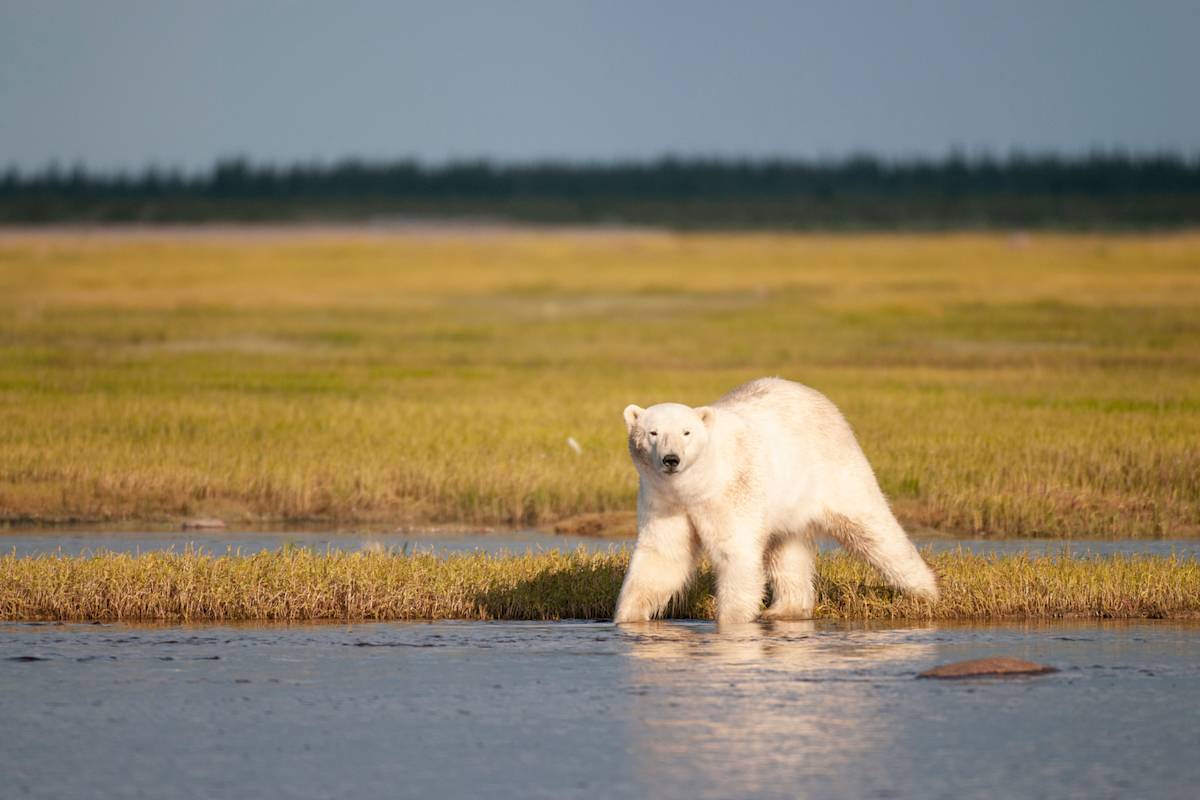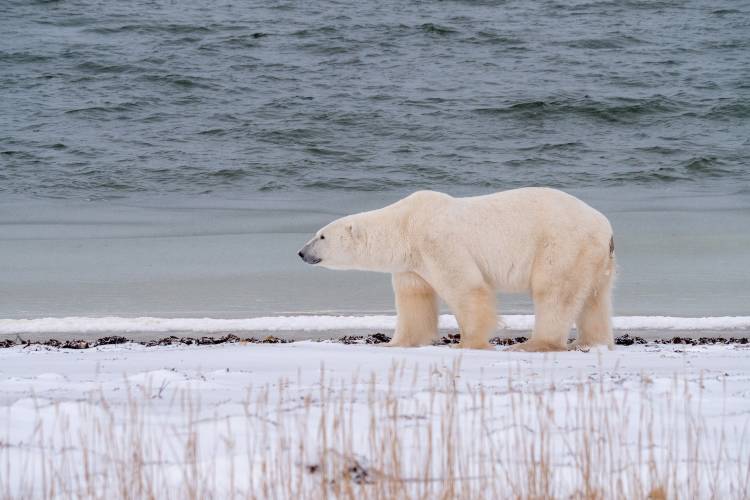“Climate is what you expect, weather is what you get” goes a saying among climatologists. It reminds us that weather is chaotic and can yield surprising variations that are, however, consistent with our understanding of climate overall.
This year’s weather and sea ice behavior in Hudson Bay is such an example. Home to two important groups of polar bears, the Western and Southern Hudson Bay populations, it is a region in the Subarctic that scientists keep a close eye on.
For most of May, a strong high pressure system parked itself over northern Canada just North of Hudson Bay (Figure 1, left panel). It’s not uncommon for high pressure systems to do that in spring and summer in this region, but usually they are located farther north and are not as persistent. High-pressure systems spin clockwise in the Northern Hemisphere, thus causing winds to blow from east to west on their southern flank. This is the opposite of hurricanes, for example, which are just very strong low pressure systems.
This year’s weather configuration led to strong winds blowing from east to west right across Hudson Bay. At this time of year, the sea ice in Hudson Bay starts to thin as the melt season begins. The winds were strong enough to push the thinning ice towards the west, opening up Eastern and Southern Hudson Bay very early this year (top right panel in Figure 1). This caused ice to pile up in Western Hudson Bay, which remained completely full of ice through June (bottom right panel in Figure 1). The opposing behavior of sea ice in these two ecoregions is, in fact, the most lopsided ever recorded since reliable satellite measurements began in 1979. Never has Southern Hudson Bay been so low on sea ice this early in the year and never has Western Hudson Bay been so full of ice at the same time!


















